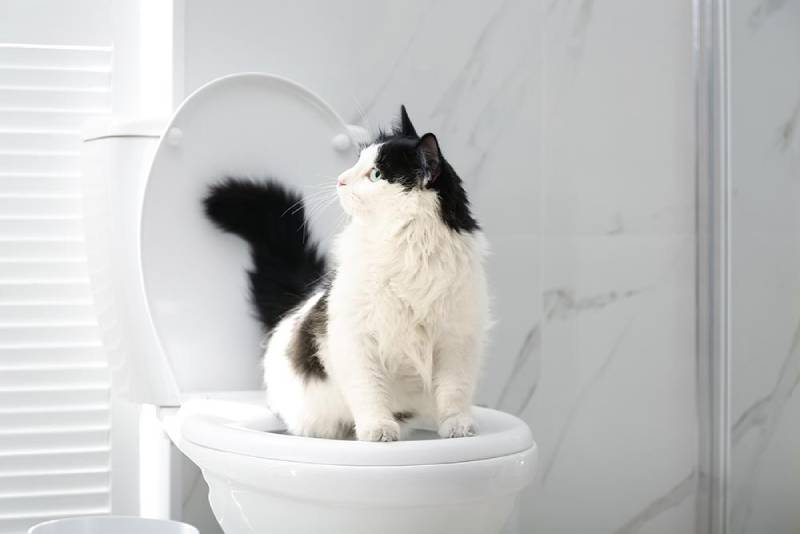Potential Risks of Flushing Cat Poop Down Your Toilet - Tips for Safer Disposal
Potential Risks of Flushing Cat Poop Down Your Toilet - Tips for Safer Disposal
Blog Article
The publisher is making a number of great pointers regarding Don’t flush cat feces down the toilet in general in this article below.

Intro
As pet cat owners, it's necessary to bear in mind just how we throw away our feline friends' waste. While it might seem hassle-free to flush cat poop down the bathroom, this practice can have harmful consequences for both the setting and human wellness.
Environmental Impact
Purging pet cat poop presents dangerous pathogens and bloodsuckers right into the supply of water, posing a considerable danger to marine communities. These impurities can negatively influence marine life and concession water quality.
Health and wellness Risks
In addition to ecological concerns, flushing feline waste can additionally posture health threats to human beings. Pet cat feces might have Toxoplasma gondii, a parasite that can cause toxoplasmosis-- a possibly extreme ailment, especially for expectant women and individuals with damaged immune systems.
Alternatives to Flushing
Fortunately, there are more secure and a lot more responsible methods to get rid of pet cat poop. Consider the following choices:
1. Scoop and Dispose in Trash
One of the most typical technique of throwing away cat poop is to scoop it into an eco-friendly bag and throw it in the trash. Make sure to use a dedicated litter inside story and take care of the waste promptly.
2. Usage Biodegradable Litter
Opt for naturally degradable pet cat litter made from materials such as corn or wheat. These litters are eco-friendly and can be safely gotten rid of in the garbage.
3. Hide in the Yard
If you have a lawn, think about burying pet cat waste in a designated area away from vegetable gardens and water sources. Make certain to dig deep adequate to avoid contamination of groundwater.
4. Install a Pet Waste Disposal System
Purchase a pet dog waste disposal system especially created for feline waste. These systems make use of enzymes to break down the waste, lowering odor and ecological effect.
Conclusion
Responsible pet dog possession extends past providing food and shelter-- it also involves proper waste administration. By avoiding flushing cat poop down the bathroom and going with alternate disposal methods, we can minimize our ecological impact and secure human health.
Why Can’t I Flush Cat Poop?
It Spreads a Parasite
Cats are frequently infected with a parasite called toxoplasma gondii. The parasite causes an infection called toxoplasmosis. It is usually harmless to cats. The parasite only uses cat poop as a host for its eggs. Otherwise, the cat’s immune system usually keeps the infection at low enough levels to maintain its own health. But it does not stop the develop of eggs. These eggs are tiny and surprisingly tough. They may survive for a year before they begin to grow. But that’s the problem.
Our wastewater system is not designed to deal with toxoplasmosis eggs. Instead, most eggs will flush from your toilet into sewers and wastewater management plants. After the sewage is treated for many other harmful things in it, it is typically released into local rivers, lakes, or oceans. Here, the toxoplasmosis eggs can find new hosts, including starfish, crabs, otters, and many other wildlife. For many, this is a significant risk to their health. Toxoplasmosis can also end up infecting water sources that are important for agriculture, which means our deer, pigs, and sheep can get infected too.
Is There Risk to Humans?
There can be a risk to human life from flushing cat poop down the toilet. If you do so, the parasites from your cat’s poop can end up in shellfish, game animals, or livestock. If this meat is then served raw or undercooked, the people who eat it can get sick.
In fact, according to the CDC, 40 million people in the United States are infected with toxoplasma gondii. They get it from exposure to infected seafood, or from some kind of cat poop contamination, like drinking from a stream that is contaminated or touching anything that has come into contact with cat poop. That includes just cleaning a cat litter box.
Most people who get infected with these parasites will not develop any symptoms. However, for pregnant women or for those with compromised immune systems, the parasite can cause severe health problems.
How to Handle Cat Poop
The best way to handle cat poop is actually to clean the box more often. The eggs that the parasite sheds will not become active until one to five days after the cat poops. That means that if you clean daily, you’re much less likely to come into direct contact with infectious eggs.
That said, always dispose of cat poop in the garbage and not down the toilet. Wash your hands before and after you clean the litter box, and bring the bag of poop right outside to your garbage bins.
https://trenchlesssolutionsusa.com/why-cant-i-flush-cat-poop/

We were brought to that write-up about How to Dispose of Cat Poop and Litter Without Plastic Bags from someone on a different web property. Feel free to take the opportunity to promote this blog if you enjoyed it. I am grateful for your time. Come back soon.
Get An Estimate Report this page